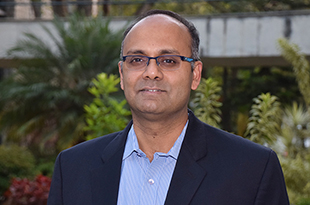Journal Article: 'Healthcare investment and income inequality' - Prof. Chetan Subramanian

Abstract: This paper examines how the relative shares of public and private health expenditures impact income inequality. We study a two period overlapping generation's growth model in which longevity is determined by both private and public health expenditure and human capital is the engine of growth. Increased investment in health, reduces mortality, raises return to education and affects income inequality. In such a framework we show that the cross-section earnings inequality is non-decreasing in the private share of health expenditure.
We test this prediction empirically using a variable that proxies for the relative intensity of investments (private versus public) using vaccination data from the National Sample Survey Organization for 76 regions in India in the year 1986–87. We link this with region-specific expenditure inequality data for the period 1987–2012. Our empirical findings, though focused on a specific health investment (vaccines), suggest that an increase in the share of the privately provided health care results in higher inequality.
Authors’ Names: Ayona Bhattacharjee, Jong Kook Shin, Chetan Subramanianand Shailender Swaminathan
Journal Name: Journal of Health Economics
Publication Details: Volume 56, December 2017, Pages 163-177
URL: http://www.sciencedirect.com/science/article/pii/S0167629617303600
Journal Article: 'Healthcare investment and income inequality' - Prof. Chetan Subramanian
Abstract: This paper examines how the relative shares of public and private health expenditures impact income inequality. We study a two period overlapping generation's growth model in which longevity is determined by both private and public health expenditure and human capital is the engine of growth. Increased investment in health, reduces mortality, raises return to education and affects income inequality. In such a framework we show that the cross-section earnings inequality is non-decreasing in the private share of health expenditure.
We test this prediction empirically using a variable that proxies for the relative intensity of investments (private versus public) using vaccination data from the National Sample Survey Organization for 76 regions in India in the year 1986–87. We link this with region-specific expenditure inequality data for the period 1987–2012. Our empirical findings, though focused on a specific health investment (vaccines), suggest that an increase in the share of the privately provided health care results in higher inequality.
Authors’ Names: Ayona Bhattacharjee, Jong Kook Shin, Chetan Subramanianand Shailender Swaminathan
Journal Name: Journal of Health Economics
Publication Details: Volume 56, December 2017, Pages 163-177
URL: http://www.sciencedirect.com/science/article/pii/S0167629617303600
